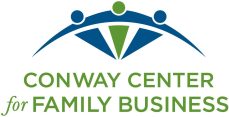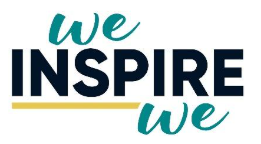Leading a family business presents a unique set of challenges and profound rewards. The lines between personal and professional commitment are already blurred, making the health of your team - and your own well-being - critical. The most powerful, yet often overlooked, tool for achieving resilience, cohesion, and sustained success is gratitude.
Gratitude must be practiced at three distinct levels: self, individual team members, and the overall culture.
Gratitude as the Foundation for Self-Leadership
In a family business, the leader often carries the emotional and financial weight of the legacy. Your stress and resilience directly impact the entire operation. This is why authentic gratitude must begin with yourself.
The Need & Benefits:
- The Need: You cannot pour from an empty cup. Personal gratitude serves as an emotional and physiological regulator. It ensures you respond to challenges with perspective rather than reactivity.
- The Benefits: Scientific research shows that practicing gratitude lowers the stress hormone cortisol, optimizing your brain for clearer decision-making and better emotional regulation. This practice allows you to internalize your own gifts, strengths and sense of appreciation for what is going well for you.
Tips to Practice Self-Gratitude
- The Daily Gratitude Pause: Set a non-disruptive, daily reminder (e.g., 2:00 PM). Stop, close your eyes, and mentally acknowledge three specific sources of gratitude. This links gratitude to mindfulness and provides an essential mental reset, interrupting the cycle of stress.
- The Gratitude Photo Album: Use your phone to take and save one photo a day of something you genuinely appreciate (a successfully completed product, a moment of teamwork, a quiet desk). This builds a visual evidence log of positive moments, combating the negativity bias.
Gratitude for the Individual Team Member Drives Performance and Trust
The core challenge in a family business is often ensuring everyone feels seen, heard, and valued for their professional contribution, regardless of their last name. Appreciation is not just about being nice; it is the most potent, low-cost lever for performance and engagement.
The Need & Benefits:
- The Need: Employees—both family and non-family—must know that their specific efforts are recognized and valued. A lack of genuine appreciation is cited as a primary reason why employees leave.
- The Benefits: Expressing specific, authentic gratitude drives measurable results. Studies show that recognized employees are nearly twice as likely to be highly engaged and make 50% more effort in tasks. Most critically, consistent gratitude builds trust, as direct reports are more likely to trust a leader whose motives include sincere appreciation.
Tips to Practice Gratitude for Individual Recognition:
- Use the BIM Framework: Move beyond generic "thanks." Structure your recognition using Behavior-Impact-Meaning (BIM):
- Behavior (B): Name the specific action. (“I saw you voluntarily rework the inventory model...")
- Impact (I): Explain the result. ("...which saved us five hours in the monthly close.")
- Meaning (M): Connect it to a value. ("That demonstrates the commitment to precision we rely on.")
- Gratitude Check-Outs in 1:1s: Dedicate the last two minutes of every one-on-one meeting to asking the employee: "What is one thing that happened this week you are genuinely grateful for professionally?" This elevates their perspective and shows you care about their experience, not just their output.
Gratitude Infusion into Culture Drives Retention
When gratitude is practiced only at the top, it dies quickly. Infusing it into the culture means creating systems that encourage peer-to-peer appreciation and making recognition a consistent organizational ritual. This is where gratitude becomes your most effective risk management strategy.
The Need & Benefits:
- The Need: In a family business, high-performing non-family members need to feel their efforts are equally weighted. A pervasive culture of appreciation reduces hostility and prevents top talent from seeking better recognition elsewhere.
- The Benefits: A strong culture of recognition drastically improves retention. Companies with effective recognition programs report a 31% lower voluntary turnover rate. Considering the cost of replacing an employee can be up to two times their annual salary, gratitude is an investment with an extremely high ROI. As I wrote in Leading with Gratitude, as a leader, you must set the tone for the organization.
Tips to Practice Gratitude for Cultural Infusion:
- The "Gratitude Gap" Meeting Opener: Start your weekly team meetings with a quick, 3-minute round where participants acknowledge someone outside of the room who helped them achieve something that week. This breaks down silos and normalizes appreciation as a professional tool.
- Cascading Thank-You Notes: Commit to writing one physical or high-quality digital thank-you note per week to someone who is not your direct report (e.g., IT, security, a new junior team member, someone cross-departmental). This ensures appreciation flows across all functions, reinforcing the idea that every role is valued.
By actively committing to and systemizing gratitude at these three levels, the family business leader moves from simply managing operations to actively building a more resilient, engaged, and ultimately, more profitable legacy.
Ready to practice gratitude for yourself, for your team, and to infuse into your culture? Reach out to me today to explore ways to enhance your practice and develop your leadership skills.
Tami Chapek, PCC
CEO and Founder | Executive Leadership Coach
WeInspireWe
If you are interested in topics that address leadership roles in your family-owned business, please join us at our Leadership Development monthly sessions that Tami facilitates. Contact Amy at adotts@familybusinesscenter if you have any questions about this group.


